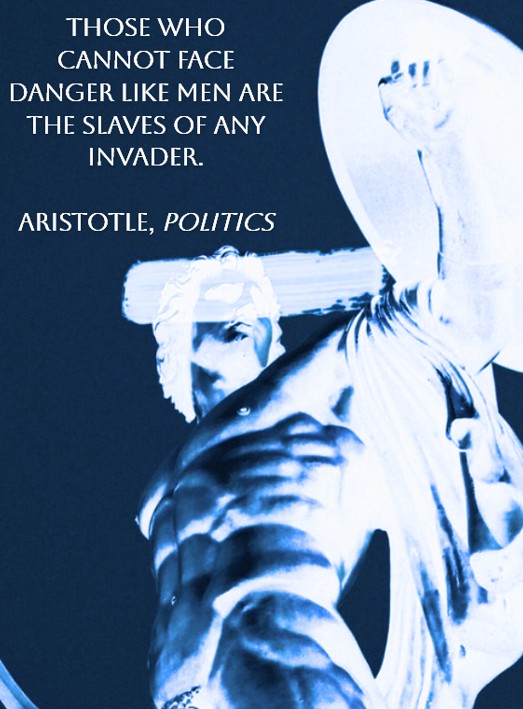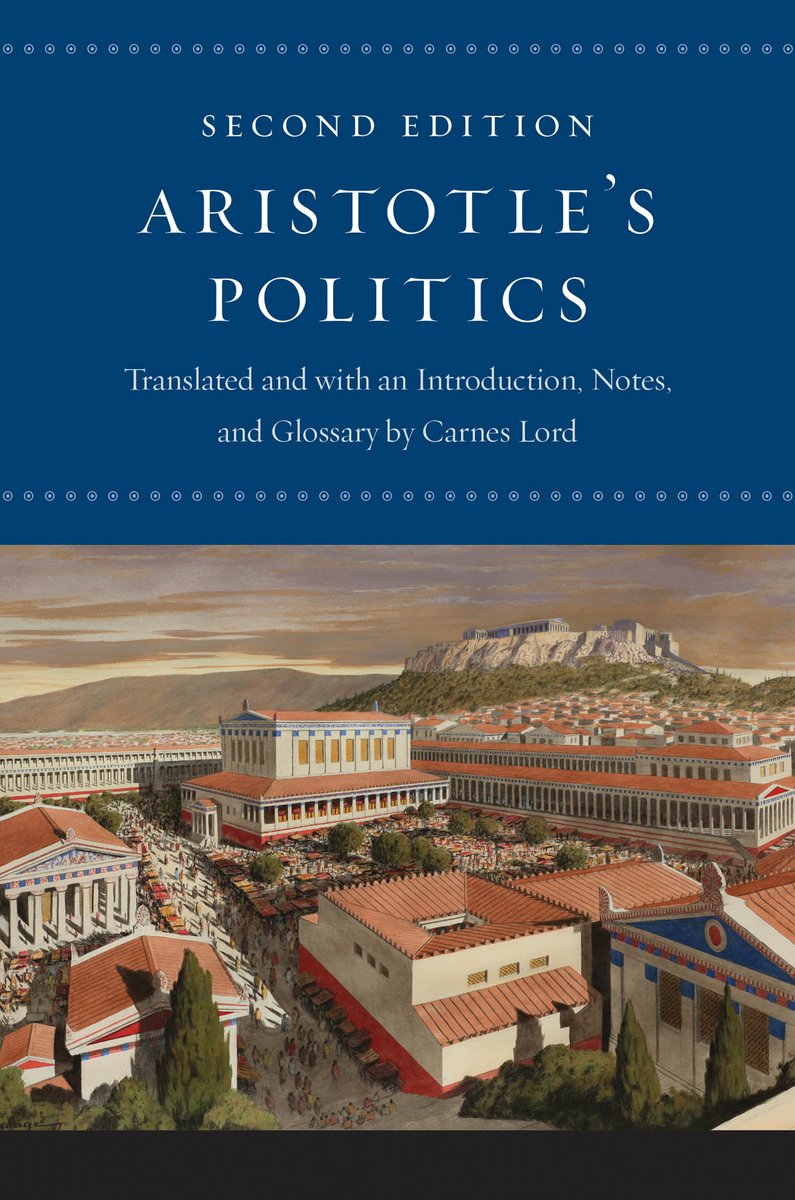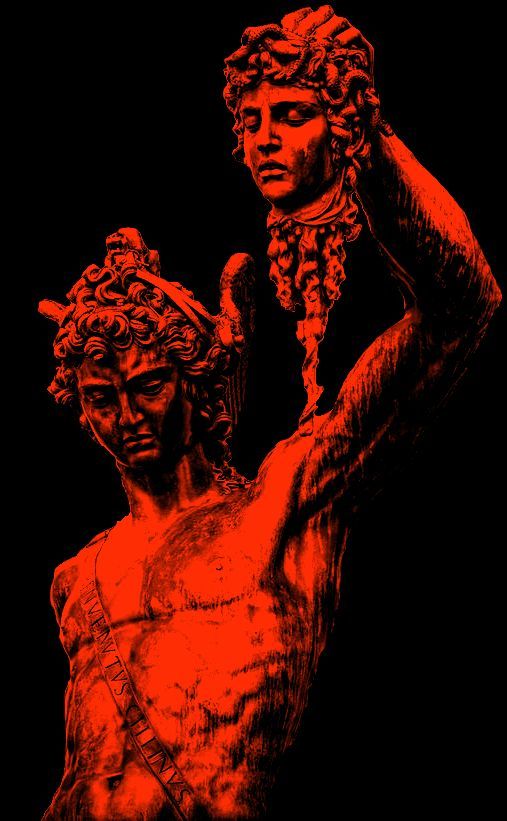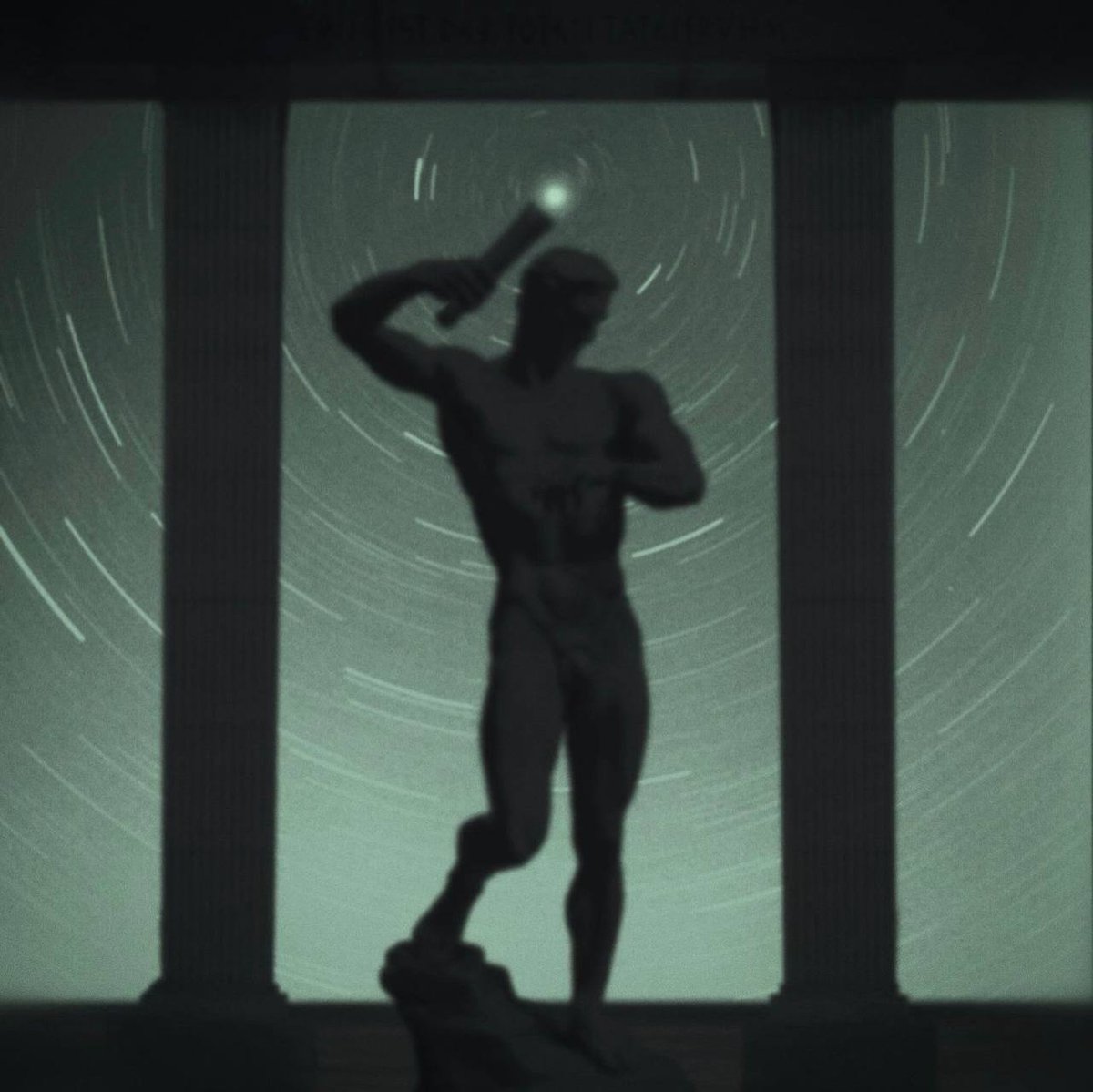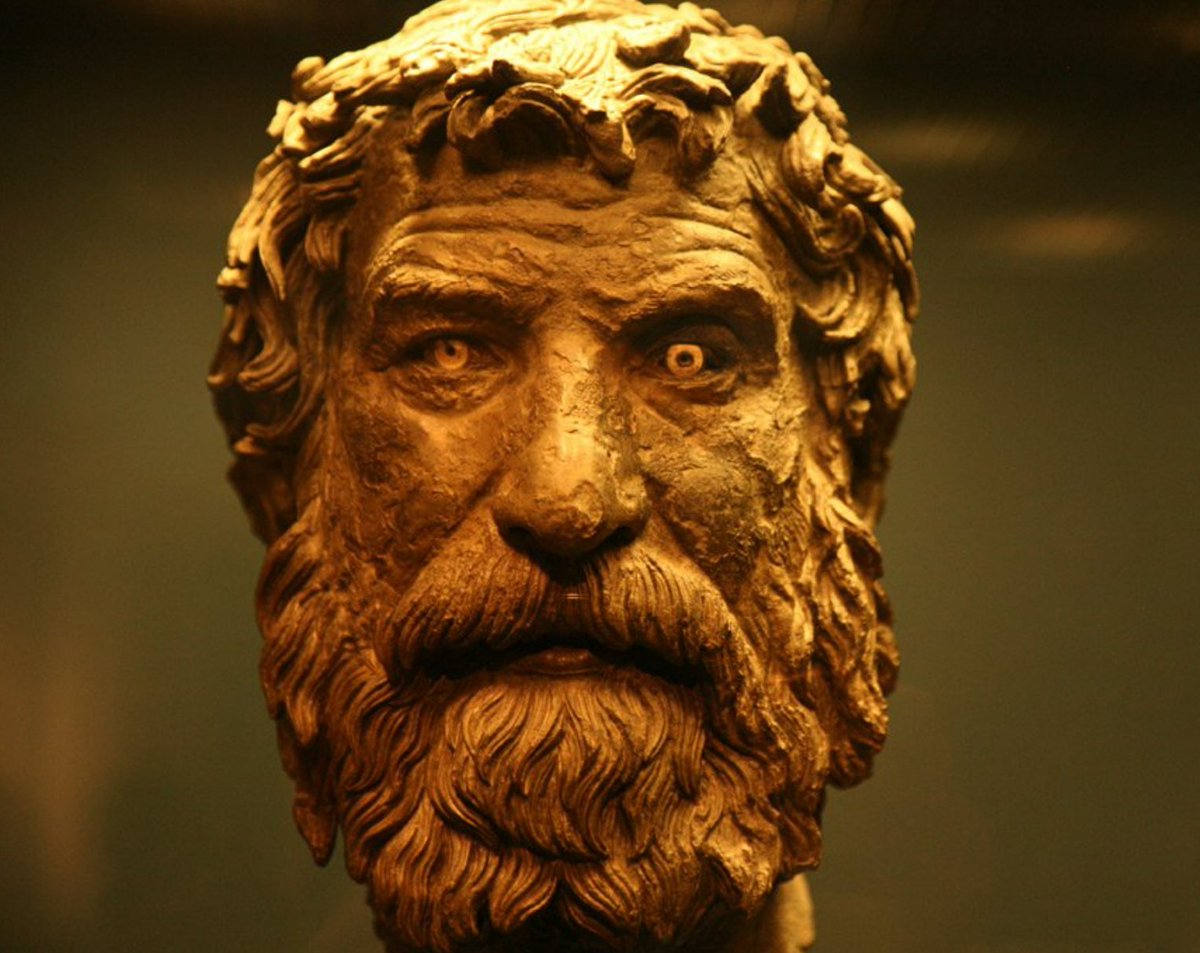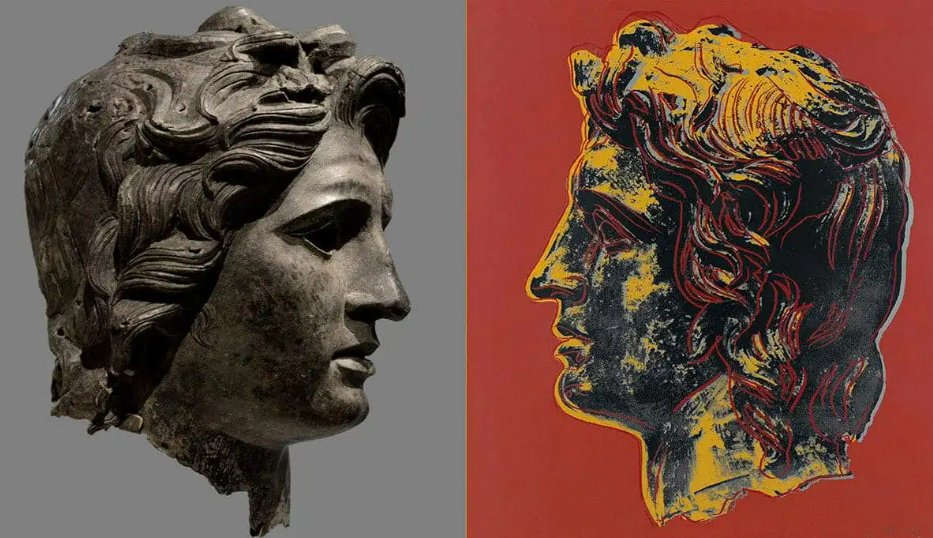1/ Let us discuss Plato’s “Timaeus,” the dialogue in which philosophy first dares to speak of the origin of the cosmos.
Of all the dialogues, the “Timaeus” is at once the most audacious in scope and the most far-reaching in its impact. Composed in the fourth century before Christ, it dares to recount nothing less than the origin of the universe, the constitution of the soul, and the place of man within the whole. Where most dialogues proceed through the familiar contest of questions and answers, this work takes the form of a vast monologue, delivered chiefly by the Pythagorean Timaeus of Locri, whose authority rests upon his knowledge of mathematics, astronomy, and cosmology. The “Timaeus” treats creation not as accident or blind motion but as the product of reason. The universe, Plato tells us, is the handiwork of a divine craftsman, the Demiurge, who looks to the changeless order of the eternal forms and, by imitating them, imposes proportion, harmony, and measure upon primordial chaos. In this act philosophy gives to the West its first systematic cosmology, an account that links the visible order of nature to the invisible order of intellect.
For centuries this was the Platonic dialogue par excellence in the Latin West. Cicero translated a portion in the last years of the Republic, and Calcidius in the fourth century supplied a fuller Latin version that remained for nearly a millennium the only substantial access to Plato available to Christian Europe. It was through this channel that the Church Fathers first encountered Plato, and through it that much of Christian theology absorbed the Platonic division of soul and body, the vision of the cosmos as rationally ordered, and the very notion of creation as a purposive act. Yet the historical weight of its influence must not obscure its radical originality. The “Timaeus” is not revelation but philosophy: an attempt by unaided reason to explain why the world exhibits harmony, why the heavens move with regularity, and why the human soul, though exiled in flesh, still recognizes in that celestial order the pattern of its own lost perfection.
To take up this dialogue with understanding is to step into the very beginning of Western thought. Here we are asked why being is superior to becoming, why the soul must rule over the body, and why intellect, never satisfied with mere appearances, strains toward the eternal forms that give structure to all things. The account offered is neither myth in the simple sense nor science as later ages would define it. Though it speaks of triangles, solids, and elements, and though it recounts the sinking of Atlantis and the succession of cosmic cataclysms, it moves on a higher plane. It is what Plato himself calls a eikôs muthos, a “likely story,” which does not claim absolute certainty but reveals, through reason and image, how the soul may orient itself by the eternal pattern that underlies all change.
The present essay will unfold the “Timaeus” in stages, treating it not as a relic entombed in antiquity but as a living text whose questions still shape the highest aims of philosophy.
Today marks Part I. The course of inquiry will follow the dialogue itself: first the dramatic frame of the discourse, then the distinction between being and becoming, then the vision of the divine craftsman. From there we shall turn to the role of the receptacle, the generation of the world-soul, the constitution of the elements, the nature of time, the relation of intellect and necessity, and finally the account of man as a microcosm within the whole.
Of all the dialogues, the “Timaeus” is at once the most audacious in scope and the most far-reaching in its impact. Composed in the fourth century before Christ, it dares to recount nothing less than the origin of the universe, the constitution of the soul, and the place of man within the whole. Where most dialogues proceed through the familiar contest of questions and answers, this work takes the form of a vast monologue, delivered chiefly by the Pythagorean Timaeus of Locri, whose authority rests upon his knowledge of mathematics, astronomy, and cosmology. The “Timaeus” treats creation not as accident or blind motion but as the product of reason. The universe, Plato tells us, is the handiwork of a divine craftsman, the Demiurge, who looks to the changeless order of the eternal forms and, by imitating them, imposes proportion, harmony, and measure upon primordial chaos. In this act philosophy gives to the West its first systematic cosmology, an account that links the visible order of nature to the invisible order of intellect.
For centuries this was the Platonic dialogue par excellence in the Latin West. Cicero translated a portion in the last years of the Republic, and Calcidius in the fourth century supplied a fuller Latin version that remained for nearly a millennium the only substantial access to Plato available to Christian Europe. It was through this channel that the Church Fathers first encountered Plato, and through it that much of Christian theology absorbed the Platonic division of soul and body, the vision of the cosmos as rationally ordered, and the very notion of creation as a purposive act. Yet the historical weight of its influence must not obscure its radical originality. The “Timaeus” is not revelation but philosophy: an attempt by unaided reason to explain why the world exhibits harmony, why the heavens move with regularity, and why the human soul, though exiled in flesh, still recognizes in that celestial order the pattern of its own lost perfection.
To take up this dialogue with understanding is to step into the very beginning of Western thought. Here we are asked why being is superior to becoming, why the soul must rule over the body, and why intellect, never satisfied with mere appearances, strains toward the eternal forms that give structure to all things. The account offered is neither myth in the simple sense nor science as later ages would define it. Though it speaks of triangles, solids, and elements, and though it recounts the sinking of Atlantis and the succession of cosmic cataclysms, it moves on a higher plane. It is what Plato himself calls a eikôs muthos, a “likely story,” which does not claim absolute certainty but reveals, through reason and image, how the soul may orient itself by the eternal pattern that underlies all change.
The present essay will unfold the “Timaeus” in stages, treating it not as a relic entombed in antiquity but as a living text whose questions still shape the highest aims of philosophy.
Today marks Part I. The course of inquiry will follow the dialogue itself: first the dramatic frame of the discourse, then the distinction between being and becoming, then the vision of the divine craftsman. From there we shall turn to the role of the receptacle, the generation of the world-soul, the constitution of the elements, the nature of time, the relation of intellect and necessity, and finally the account of man as a microcosm within the whole.
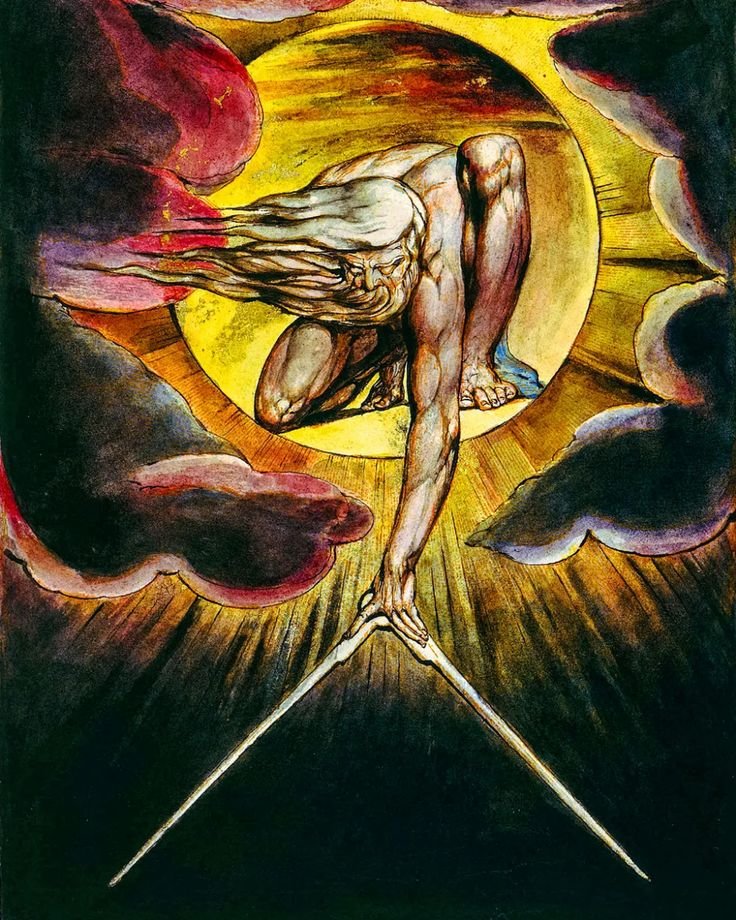
2/ The “Timaeus” opens as a sequel, carrying forward the conversation of Plato’s most celebrated work, the “Republic.” On the previous day Socrates had described the ideal city, its classes and laws, its guardians and its rulers. Yet he remains unsatisfied. What has been drawn in speech remains fixed, like painted figures that suggest life but lack motion. He therefore asks his companions to animate the city, to set it in action, and to show how it would contend with other states.
The company assembled is carefully chosen. Critias, claiming descent from Solon, recalls the Egyptian priest who told Solon that the Greeks were like children, forgetful of their own antiquity, and who related the tale of Atlantis, the mighty island that once warred with Athens. Hermocrates, the Syracusan general, embodies the statesman’s concern with power and strategy, while Timaeus of Locri represents the philosopher, a man steeped in Pythagorean mysticism, versed in number, harmony, and astronomy. Plato gathers them with deliberate purpose, forming a hierarchy of voices: the politician recalling the lessons of history, the general knowing the nature of conflict, and the philosopher alone capable of speaking of the cosmos.
Even the absence of a fourth guest is meaningful. On the surface it lends the dialogue dramatic realism, as if Plato wished to assure posterity that this was a genuine exchange. More deeply, the triad itself is symbolic: three voices suffice to reflect politics, war, and philosophy, yet their very incompleteness points to the truth that ultimate questions cannot be resolved by the many, but only by the few, and above all by the philosopher, who must bear the greatest burden. It is difficult not to hear in this structure an echo of what Georges Dumézil would later identify as the Indo-European tripartite order of sovereignty, arms, and sacred wisdom, but that is a subject for another section of this essay.
Socrates begins by rehearsing the “Republic” in miniature, repeating its themes so that the new inquiry can build upon them. The cosmos, he implies, is the greatest of all cities, and just as the soul is the microcosm of the city, the city is the microcosm of the universe. The order of man and the order of nature are linked, and philosophy must grasp both if it is to be complete.
It is Critias who first responds, offering the tale of Atlantis as told to Solon by the Egyptian priests. The point, however, is not Atlantis itself but Athens, presented not merely as an ideal city in speech but as a historical reality, noble in its victory over barbaric wealth and hubris. Yet Critias does not continue the tale to its end. He yields the floor to Timaeus, for the story of the cosmos must precede the story of a city. The defeat of Atlantis will belong to another dialogue, the unfinished “Critias.” In the “Timaeus,” the stage is cleared for a higher task: to speak of the beginning of the universe itself.
The dramatic frame is not a mere literary device but shows that politics without cosmology is partial and incomplete. The city must be ordered by the same principles that govern the heavens, and the soul must imitate the harmony of the whole. By setting the scene in this way Plato reminds us that philosophy must not stop with the affairs of men. It must look upward to the order of being itself, for only in the contemplation of that order can the city, the soul, and the world be brought into concord, and it is precisely this order that Plato next sets forth in his distinction between being and becoming.
The company assembled is carefully chosen. Critias, claiming descent from Solon, recalls the Egyptian priest who told Solon that the Greeks were like children, forgetful of their own antiquity, and who related the tale of Atlantis, the mighty island that once warred with Athens. Hermocrates, the Syracusan general, embodies the statesman’s concern with power and strategy, while Timaeus of Locri represents the philosopher, a man steeped in Pythagorean mysticism, versed in number, harmony, and astronomy. Plato gathers them with deliberate purpose, forming a hierarchy of voices: the politician recalling the lessons of history, the general knowing the nature of conflict, and the philosopher alone capable of speaking of the cosmos.
Even the absence of a fourth guest is meaningful. On the surface it lends the dialogue dramatic realism, as if Plato wished to assure posterity that this was a genuine exchange. More deeply, the triad itself is symbolic: three voices suffice to reflect politics, war, and philosophy, yet their very incompleteness points to the truth that ultimate questions cannot be resolved by the many, but only by the few, and above all by the philosopher, who must bear the greatest burden. It is difficult not to hear in this structure an echo of what Georges Dumézil would later identify as the Indo-European tripartite order of sovereignty, arms, and sacred wisdom, but that is a subject for another section of this essay.
Socrates begins by rehearsing the “Republic” in miniature, repeating its themes so that the new inquiry can build upon them. The cosmos, he implies, is the greatest of all cities, and just as the soul is the microcosm of the city, the city is the microcosm of the universe. The order of man and the order of nature are linked, and philosophy must grasp both if it is to be complete.
It is Critias who first responds, offering the tale of Atlantis as told to Solon by the Egyptian priests. The point, however, is not Atlantis itself but Athens, presented not merely as an ideal city in speech but as a historical reality, noble in its victory over barbaric wealth and hubris. Yet Critias does not continue the tale to its end. He yields the floor to Timaeus, for the story of the cosmos must precede the story of a city. The defeat of Atlantis will belong to another dialogue, the unfinished “Critias.” In the “Timaeus,” the stage is cleared for a higher task: to speak of the beginning of the universe itself.
The dramatic frame is not a mere literary device but shows that politics without cosmology is partial and incomplete. The city must be ordered by the same principles that govern the heavens, and the soul must imitate the harmony of the whole. By setting the scene in this way Plato reminds us that philosophy must not stop with the affairs of men. It must look upward to the order of being itself, for only in the contemplation of that order can the city, the soul, and the world be brought into concord, and it is precisely this order that Plato next sets forth in his distinction between being and becoming.

3/ Plato begins his account by drawing the most fundamental division of all, the distinction between being and becoming. He sets forth two orders of reality: that which always is, eternal and changeless, grasped only by nous (intellect); and that which is always in flux, coming-to-be and passing-away, grasped only by aisthēsis (sense perception) and doxa (opinion). This division marks not only two kinds of objects but two ways of knowing and two modes of existence.
Plato illustrates the point with radical clarity: whatever belongs to becoming has no fixed essence. Fire burns, then vanishes; flesh ages, weakens, and dies. What is seen at one moment has altered by the next. To seek permanence in such things is futile. By contrast, the eternal realities, the forms (eidē), never suffer alteration. They are not images taken from the sensible world but the archetypes upon which sensible things are modeled. The form of fire does not flicker or fade, nor does the form of beauty lose its radiance with time. Each form is an abiding standard: invisible, intelligible, self-subsisting, and timeless. These are not abstractions but living models, and it is precisely because they are immutable that they can guide the craftsman in ordering the cosmos.
From this division arises the notion of the eikōs logos, the “likely account.” If the world is a product of becoming, then any discourse about it must share its character. Speech about the cosmos cannot claim finality, for it is about things that alter from moment to moment. Yet it may still be true in the mode of probability, a faithful image that reflects, however imperfectly, the eternal models after which the world is patterned. The “likely account” is thus neither revelation nor fiction but philosophy’s attempt to speak of the temporal in a way that still directs the mind toward what is eternal. It belongs to the same middle realm as myth, which conveys truth through images, and as reasoning, which approaches truth through concepts. The “Timaeus” oscillates between these modes because only by joining them can philosophy bridge the chasm between what always is and what is always becoming.
The implications extend beyond cosmology to the nature of man. The same division runs through us, for the soul partakes of being while the body belongs to becoming. The soul is eternal, rational, and akin to the forms; the body is mortal, mutable, and the source of disorder. This is not a mere figure of speech but a metaphysical reality: the condition of mankind is a perpetual tension between permanence and flux. The philosopher’s task is therefore both ethical and intellectual, to turn the soul toward what truly is and to guard it from sinking into the realm of what merely becomes. To live well is to align oneself with being; to live poorly is to live as though change and decay were the only realities.
For this reason the “Timaeus” insists that the study of the heavens is not idle speculation but a discipline of the soul. The stars and planets move in perfect circles, reflecting the order of eternity within the rhythms of time. To contemplate them is to recall the proper motion of one’s own soul, which embodiment has thrown into disorder. Astronomy, for Plato, is not primarily a technical science but a sacred practice, a way of restoring harmony to the soul by attuning it to the greater harmony of the cosmos. Education, in this vision, is not the accumulation of facts but the recollection of order, a training that lifts the mind from opinion to intellect.
The legacy of this distinction has been immense. It gave the Christian Fathers their conceptual framework for distinguishing the eternal God from the created world. It furnished later philosophers with the categories of substance and accident, essence and phenomenon. Even modern science, though it confines itself to the study of becoming, rests upon Plato’s conviction that beneath flux lies order, and that truth is something stable to be discovered. In the “Timaeus” this conviction receives its first and most daring expression: the visible universe is but a copy, and the eternal archetype is the true reality, a truth revealed through the work of the divine craftsman.
Plato illustrates the point with radical clarity: whatever belongs to becoming has no fixed essence. Fire burns, then vanishes; flesh ages, weakens, and dies. What is seen at one moment has altered by the next. To seek permanence in such things is futile. By contrast, the eternal realities, the forms (eidē), never suffer alteration. They are not images taken from the sensible world but the archetypes upon which sensible things are modeled. The form of fire does not flicker or fade, nor does the form of beauty lose its radiance with time. Each form is an abiding standard: invisible, intelligible, self-subsisting, and timeless. These are not abstractions but living models, and it is precisely because they are immutable that they can guide the craftsman in ordering the cosmos.
From this division arises the notion of the eikōs logos, the “likely account.” If the world is a product of becoming, then any discourse about it must share its character. Speech about the cosmos cannot claim finality, for it is about things that alter from moment to moment. Yet it may still be true in the mode of probability, a faithful image that reflects, however imperfectly, the eternal models after which the world is patterned. The “likely account” is thus neither revelation nor fiction but philosophy’s attempt to speak of the temporal in a way that still directs the mind toward what is eternal. It belongs to the same middle realm as myth, which conveys truth through images, and as reasoning, which approaches truth through concepts. The “Timaeus” oscillates between these modes because only by joining them can philosophy bridge the chasm between what always is and what is always becoming.
The implications extend beyond cosmology to the nature of man. The same division runs through us, for the soul partakes of being while the body belongs to becoming. The soul is eternal, rational, and akin to the forms; the body is mortal, mutable, and the source of disorder. This is not a mere figure of speech but a metaphysical reality: the condition of mankind is a perpetual tension between permanence and flux. The philosopher’s task is therefore both ethical and intellectual, to turn the soul toward what truly is and to guard it from sinking into the realm of what merely becomes. To live well is to align oneself with being; to live poorly is to live as though change and decay were the only realities.
For this reason the “Timaeus” insists that the study of the heavens is not idle speculation but a discipline of the soul. The stars and planets move in perfect circles, reflecting the order of eternity within the rhythms of time. To contemplate them is to recall the proper motion of one’s own soul, which embodiment has thrown into disorder. Astronomy, for Plato, is not primarily a technical science but a sacred practice, a way of restoring harmony to the soul by attuning it to the greater harmony of the cosmos. Education, in this vision, is not the accumulation of facts but the recollection of order, a training that lifts the mind from opinion to intellect.
The legacy of this distinction has been immense. It gave the Christian Fathers their conceptual framework for distinguishing the eternal God from the created world. It furnished later philosophers with the categories of substance and accident, essence and phenomenon. Even modern science, though it confines itself to the study of becoming, rests upon Plato’s conviction that beneath flux lies order, and that truth is something stable to be discovered. In the “Timaeus” this conviction receives its first and most daring expression: the visible universe is but a copy, and the eternal archetype is the true reality, a truth revealed through the work of the divine craftsman.

4/ At this point the dialogue turns to the figure of the Demiurge, the divine craftsman, whom Plato presents not as a god of myth but as nous (intellect) personified. This Demiurge is no whimsical deity, ruled by passions or trivial rivalries, but the very principle of order itself, shaping chaos into cosmos. He gazes upon the eternal model, the paradigm that “always is,” and from it fashions the visible world that “always becomes.” His motive is not compulsion but goodness. Being good, he could not withhold existence from what lacked it, but desired that all things should, as far as possible, share in order and life.
This vision of creation has no true precedent in Greek thought. The poets had spoken of the world’s emergence from chaos or its arrangement by primordial gods, but they offered no rational explanation of why the world is ordered for the best. In Homer and Hesiod, even the gods are subject to chance, conflict, and necessity. Plato, by contrast, introduces into philosophy the figure of a cosmic artisan, whose every action is guided by reason. The Demiurge is not omnipotent, for he must work with recalcitrant matter, but he is wholly benevolent, aiming always at the most beautiful and complete arrangement. His principle is teleology: each part of the cosmos has its purpose, and the whole is shaped as the most perfect living being that could exist.
The method of this craftsman is mathematical. Number, proportion, and geometry are the tools with which he imposes harmony upon disorder. Fire, air, water, and earth are not inert substances but elemental structures composed of triangles, forming the five regular solids. These solids are the stoicheia, the fundamental principles or building-blocks of the visible world. Their stability and transformations follow laws of figure and proportion. The cosmos itself takes the shape of a sphere, the most perfect of forms, equal in every direction, needing neither eyes nor limbs, since nothing lies beyond it. Its motion is circular, the most uniform of movements, and therefore the most fitting image of intellect. The architecture of the universe is thus geometry made manifest, the intelligible rendered visible.
Yet the cosmos is not mere mechanism. To its body the Demiurge imparts a soul, stretched from its center to its circumference, so that the whole becomes a living being endowed with intelligence. This world-soul is composed of indivisible and divisible substance, of sameness and difference, its revolutions mirroring the ratios of number and harmony. The stars and planets are its visible gods, each tracing its appointed course. Their movements measure time, which Plato calls the moving image of eternity. Time is therefore not a random sequence but a divine rhythm, permitting mortal souls to glimpse the eternal through the regularity of the heavens.
The figure of the Demiurge exercised a decisive influence upon later thought. To the Platonists he guaranteed that the visible world reflected intelligible perfection. To the Christian Fathers he foreshadowed the Creator God, though Plato’s craftsman works upon preexistent necessity rather than creating out of nothing, ex nihilo. To natural philosophers he became the emblem of rational order in nature. Yet in the dialogue itself the Demiurge is above all a principle of explanation: he embodies the conviction that the world is intelligible because it is the work of intellect, and that to know its order is already to participate in the reason by which it was made.
Here lies the audacity of the “Timaeus.” It does not rest with description of appearances but seeks to disclose why the world is ordered toward the good. Creation is presented neither as myth nor as empirical fact but as the highest act of philosophy, the mind discerning itself in the very structure of the whole. The Demiurge is therefore both the artisan of the cosmos and the mirror of the human soul’s highest vocation: to impose order upon chaos by contemplating the eternal and striving to embody it within the conditions of time.
In the next part, to be released this upcoming Monday, we shall turn to the receptacle, the enigmatic medium in which the craftsman’s order takes visible form.
This vision of creation has no true precedent in Greek thought. The poets had spoken of the world’s emergence from chaos or its arrangement by primordial gods, but they offered no rational explanation of why the world is ordered for the best. In Homer and Hesiod, even the gods are subject to chance, conflict, and necessity. Plato, by contrast, introduces into philosophy the figure of a cosmic artisan, whose every action is guided by reason. The Demiurge is not omnipotent, for he must work with recalcitrant matter, but he is wholly benevolent, aiming always at the most beautiful and complete arrangement. His principle is teleology: each part of the cosmos has its purpose, and the whole is shaped as the most perfect living being that could exist.
The method of this craftsman is mathematical. Number, proportion, and geometry are the tools with which he imposes harmony upon disorder. Fire, air, water, and earth are not inert substances but elemental structures composed of triangles, forming the five regular solids. These solids are the stoicheia, the fundamental principles or building-blocks of the visible world. Their stability and transformations follow laws of figure and proportion. The cosmos itself takes the shape of a sphere, the most perfect of forms, equal in every direction, needing neither eyes nor limbs, since nothing lies beyond it. Its motion is circular, the most uniform of movements, and therefore the most fitting image of intellect. The architecture of the universe is thus geometry made manifest, the intelligible rendered visible.
Yet the cosmos is not mere mechanism. To its body the Demiurge imparts a soul, stretched from its center to its circumference, so that the whole becomes a living being endowed with intelligence. This world-soul is composed of indivisible and divisible substance, of sameness and difference, its revolutions mirroring the ratios of number and harmony. The stars and planets are its visible gods, each tracing its appointed course. Their movements measure time, which Plato calls the moving image of eternity. Time is therefore not a random sequence but a divine rhythm, permitting mortal souls to glimpse the eternal through the regularity of the heavens.
The figure of the Demiurge exercised a decisive influence upon later thought. To the Platonists he guaranteed that the visible world reflected intelligible perfection. To the Christian Fathers he foreshadowed the Creator God, though Plato’s craftsman works upon preexistent necessity rather than creating out of nothing, ex nihilo. To natural philosophers he became the emblem of rational order in nature. Yet in the dialogue itself the Demiurge is above all a principle of explanation: he embodies the conviction that the world is intelligible because it is the work of intellect, and that to know its order is already to participate in the reason by which it was made.
Here lies the audacity of the “Timaeus.” It does not rest with description of appearances but seeks to disclose why the world is ordered toward the good. Creation is presented neither as myth nor as empirical fact but as the highest act of philosophy, the mind discerning itself in the very structure of the whole. The Demiurge is therefore both the artisan of the cosmos and the mirror of the human soul’s highest vocation: to impose order upon chaos by contemplating the eternal and striving to embody it within the conditions of time.
In the next part, to be released this upcoming Monday, we shall turn to the receptacle, the enigmatic medium in which the craftsman’s order takes visible form.

• • •
Missing some Tweet in this thread? You can try to
force a refresh


